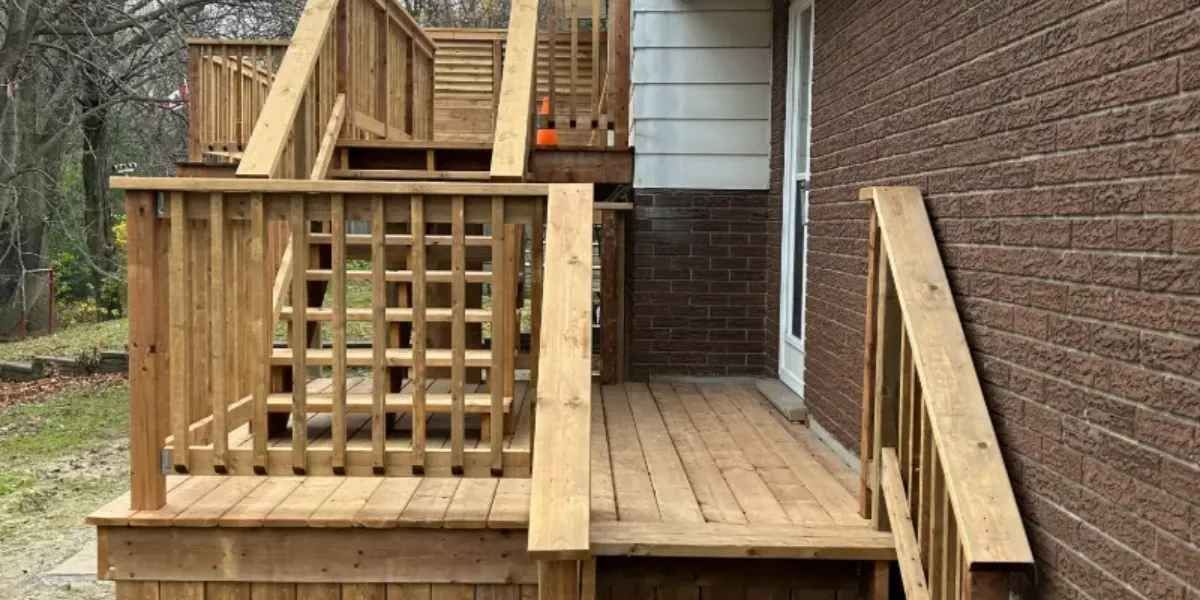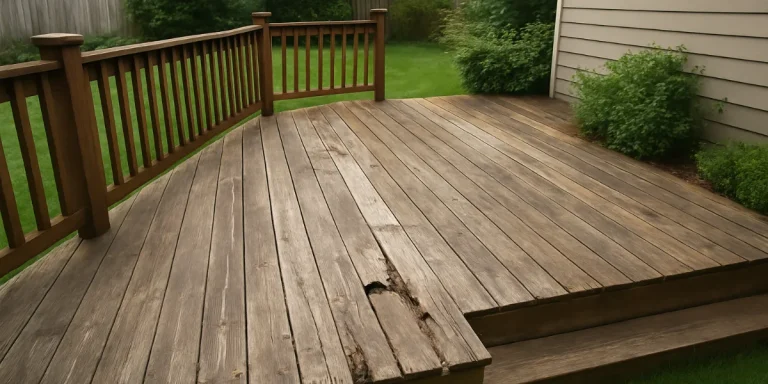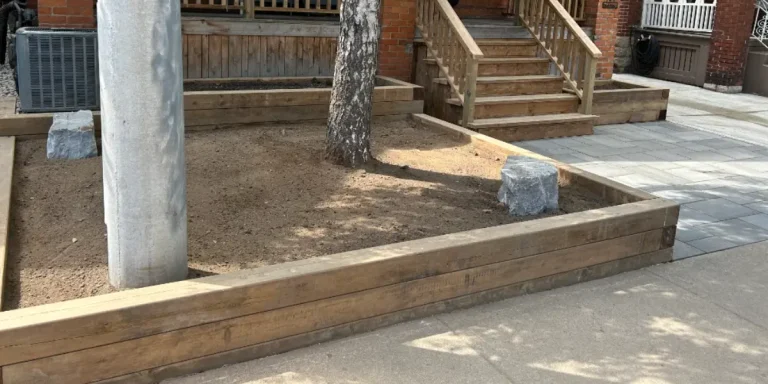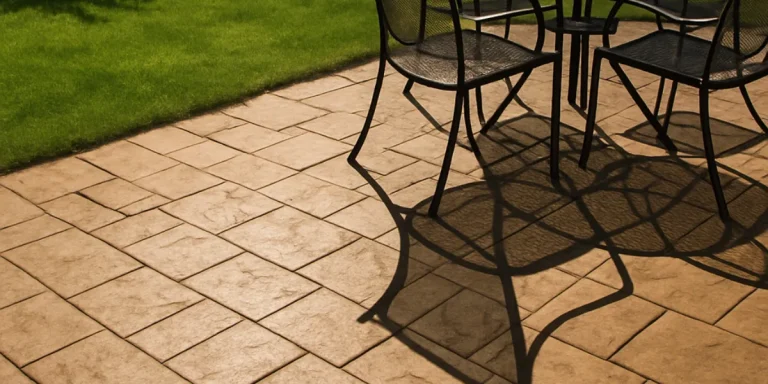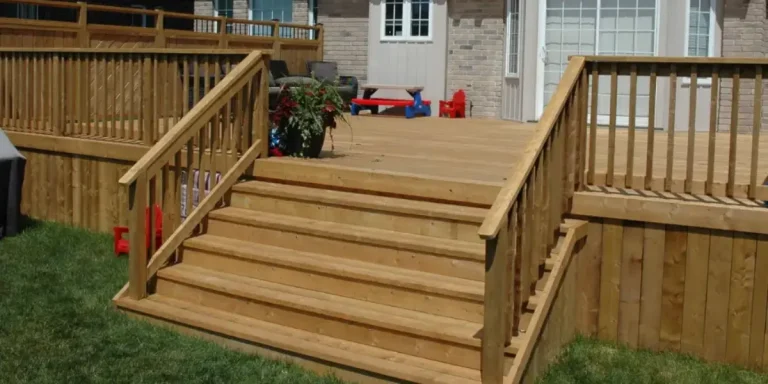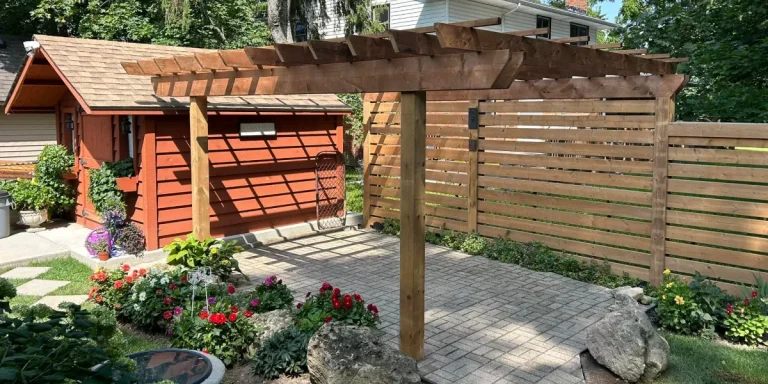When Is It Time to Replace Your Old Wooden Deck?
A wooden deck can be a beautiful extension of your home—offering a place to relax, entertain, and enjoy the outdoors. But over time, exposure to Ontario’s weather takes its toll. If your deck is starting to show signs of age, you may be wondering: Should I repair it, or is it time for a full replacement?
In this post, we’ll walk you through how to recognize when your deck has reached the end of its lifespan and what options are available for a safe, attractive upgrade.
Signs Your Wooden Deck May Need Replacement
Your deck may have served your family well for years—but exposure to the elements, natural aging, and changing needs can eventually take a toll. While not every aging deck requires full replacement, there are clear warning signs that it’s time to consider rebuilding. If you’re noticing one or more of the following issues, it may be safer and more cost-effective to invest in a new structure.
1. Structural Damage or Instability
Safety is the top priority when it comes to outdoor living structures. Structural issues can quickly turn a relaxing space into a liability. Be on the lookout for:
-
-
- Wobbly or leaning railings that no longer feel secure
- Rotted or cracked joists and beams, especially in shaded or damp areas
- Posts that are sinking or shifting due to erosion or poor footing
- Loose, rusted, or missing fasteners such as nails, screws, or brackets
-
If the integrity of the deck’s frame or supports is compromised, repairs may only provide a short-term fix—whereas replacement ensures your deck is safe, stable, and up to code.
2. Widespread Rot or Moisture Damage
Even with pressure-treated lumber, wooden decks in Hamilton’s four-season climate are vulnerable to rot over time. Prolonged exposure to moisture can cause structural members to deteriorate from the inside out. Telltale signs include:
-
-
- Soft, spongy, or splintering wood when you press down with a screwdriver
- Mildew or mold growth, especially in shaded or poorly ventilated areas
- Visible signs of decay on multiple boards, not just in isolated areas
-
Once rot sets in across the deck, it’s usually more practical to replace the entire structure rather than attempt ongoing repairs.
3. Surface Damage That Affects Usability
An old deck with uneven surfaces or broken boards isn’t just unattractive—it’s a hazard. Surface damage may include:
-
-
- Cracked, cupped, or warped planks that are difficult to walk on
- Exposed nails or screws popping out from movement over time
- Gaps between boards that trap dirt, weeds, or water
- Areas you avoid using because they feel unsafe or uncomfortable
-
If you’re constantly patching problem spots or limiting how you use your deck, it’s time to evaluate whether rebuilding would give you better long-term value and functionality.
4. Insect Infestation
Wood-boring insects like carpenter ants and termites can silently cause severe damage beneath the surface of your deck. Common signs include:
-
-
- Sawdust or frass (insect droppings) near the base of posts or joists
- Tiny holes or tunneling patterns in the wood
- Sagging or hollow-sounding boards that have been weakened from the inside
-
If the infestation has compromised structural supports, replacing the deck—and addressing the underlying pest issue—is often the safest route.
5. Outdated Design or Inadequate Layout
Sometimes, a deck is structurally sound but no longer fits your lifestyle. Your family’s needs and tastes may have evolved, or your landscape may have changed. Reasons to consider a design update include:
-
-
- Limited space for dining, entertaining, or relaxing
- Awkward traffic flow between the house, yard, and garden
- Lack of privacy from neighbors or adjacent properties
- Aesthetic mismatch with newer additions like patios, pavilions, or outdoor kitchens
-
Many Hamilton-area homeowners choose to replace their old decks with multi-level platforms, integrated seating walls, pergolas, or composite decking to modernize their outdoor space and improve functionality.
Why Replacement Can Be the Smarter Investment
It’s natural to consider repairs when your deck begins to show signs of wear. However, if structural issues, rot, or outdated design are at play, patchwork fixes can become a costly cycle. In many cases, replacing your old deck offers far greater value over the long term—both financially and functionally.
Here’s why:
A Stronger, Safer Foundation
When you rebuild from the ground up, you have the opportunity to correct any issues with the original construction—such as inadequate footings, improper framing, or poor drainage. A new deck ensures:
-
- Proper load-bearing supports designed to meet local building codes
- Durable framing and joists that resist moisture and shifting
- Secure railings and stairs that prioritize safety for everyone in your household
Long-Term Peace of Mind
Repairs often address symptoms, not the root cause. Replacing your deck eliminates hidden or recurring issues and gives you the confidence that your outdoor space is built to last through Ontario’s seasons. With quality materials and expert installation, a new deck typically lasts 20+ years with minimal maintenance.
Aesthetic and Lifestyle Upgrades
Replacement isn’t just about safety—it’s also an opportunity to enhance the beauty and usability of your yard. A new deck can be designed to:
-
- Match updated landscaping or outdoor features like patios, pergolas, or walkways
- Accommodate more seating, entertaining, or storage space
- Improve traffic flow between your home, yard, and garden areas
- Add visual interest with custom railings, stairs, or built-in planters
Options for Better Materials
Older decks were often built with basic pressure-treated lumber. Today, you can choose from a variety of upgraded materials, such as:
-
- Cedar decking, which offers natural resistance to decay and a beautiful finish
- Composite decking, which mimics wood but resists rot, fading, and splinters
- Modern railing systems in wood, aluminum, or cable for a refined look
Investing in better materials means fewer repairs, easier maintenance, and a more luxurious finish.
At Square Leaf Landscaping, we specialize in custom wood deck construction tailored to the unique needs of homeowners across Hamilton, Burlington, Oakville, Stoney Creek, Waterdown, and surrounding areas. Our design-build approach ensures your new deck fits seamlessly into your overall landscape—whether you’re integrating it with interlocking pavers, garden beds, or shade structures.
From concept to completion, we deliver craftsmanship, professionalism, and results you’ll enjoy for years. Let us help you create a safe, stylish, and functional outdoor space that truly feels like an extension of your home.
What to Expect from a New Deck Project
When you work with Square Leaf Landscaping, we guide you from start to finish. Our process includes:
-
- A thorough site assessment
- Customized design based on your space, budget, and goals
- Selection of materials like cedar, pressure-treated wood, or low-maintenance composite
- Safe, code-compliant construction with a focus on durability
- Optional upgrades like lighting, privacy walls, or pergolas
We can also tie in your new deck with interlocking patio installations, retaining walls, or garden beds to transform your entire outdoor space.
Proudly Serving Hamilton and Surrounding Areas
Square Leaf Landscaping builds and replaces custom decks in:
-
- Hamilton
- Ancaster
- Burlington
- Dundas
- Waterdown
- Aldershot
- Grimsby
- Binbrook
- Oakville
- Stoney Creek
Not sure if you’re in our service area? Reach out—our team may still be able to help.
Ready for a Safer, More Beautiful Deck?
Let’s rebuild it right.
If your deck is past its prime, don’t settle for temporary fixes. Contact Square Leaf Landscaping for expert recommendations and a no-pressure estimate. We’ll design and build a new deck that enhances your backyard, fits your lifestyle, and stands the test of time.
Call us today or request a quote online to get started on your deck replacement project.

